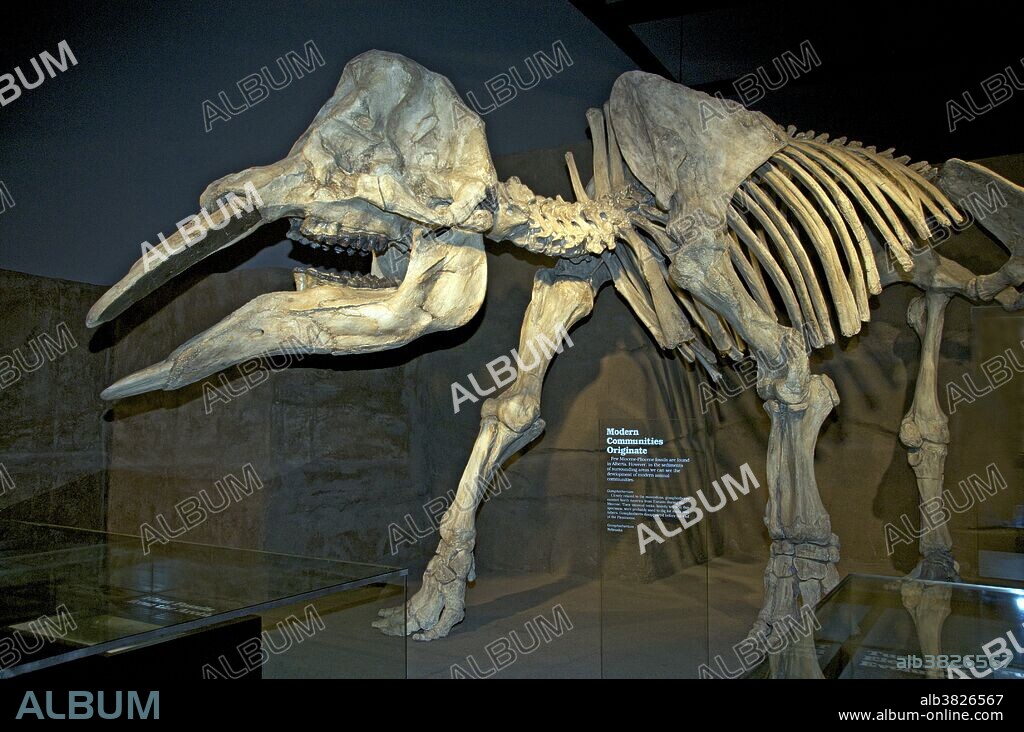alb3826567
GOMPHOTHERIUM

|
Zu einem anderen Lightbox hinzufügen |
|
Zu einem anderen Lightbox hinzufügen |



Haben Sie bereits ein Konto? Anmelden
Sie haben kein Konto? Registrieren
Dieses Bild kaufen

Titel:
GOMPHOTHERIUM
Untertitel:
Siehe automatische Übersetzung
Gomphotherium, closely related to mastodons, disappeared before the end of the Pleistocene. The 3 m (10 ft) tall creature, also known as Trilophodon or Tetrabelodon, resembled a modern elephant but had four tusks instead of two: two on the upper jaw and two on the elongated lower jaw. The lower ones are parallel and shaped like a shovel and were probably used as such. Unlike modern elephants, the upper tusks were covered by a layer of enamel. These animals probably lived in swamps or near lakes, using their tusks to dig or scrape up aquatic vegetation. This specimen was found in Nebraska. Royal Tyrrell Museum, Alberta, Canada.
Bildnachweis:
Album / Science Source / Stephen J. Krasemann
Freigaben (Releases):
Model: Nein - Eigentum: Nein
Rechtefragen?
Rechtefragen?
Bildgröße:
4304 x 2852 px | 35.1 MB
Druckgröße:
36.4 x 24.1 cm | 14.3 x 9.5 in (300 dpi)
Schlüsselwörter:
 Pinterest
Pinterest Twitter
Twitter Facebook
Facebook Link kopieren
Link kopieren Email
Email
